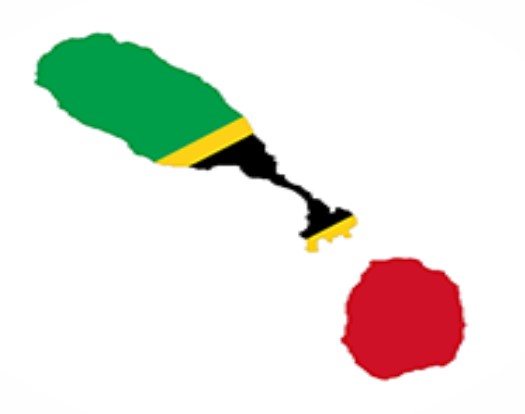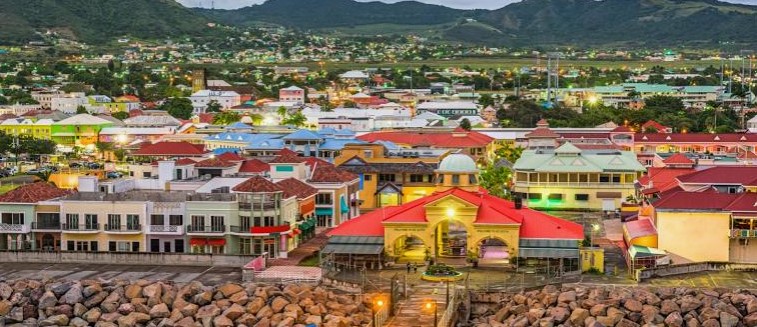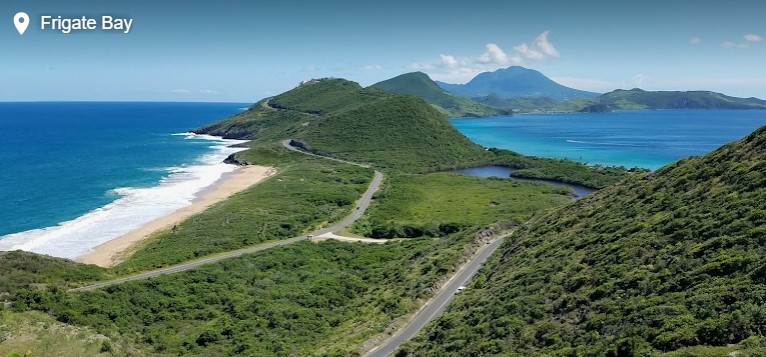
Saint Kitts and Nevis is an island country and microstate in the Caribbean and our first official foray into the West Indies (or the Lesser Antilles). With only 261 square kilometres and about 50,000 residents it is one of the top 10 smallest countries in the world.
The capital city is Basseterre and is where we found ourselves landing.

Basseterre is on the larger island of Saint Kitts and is the main port for passengers and goods. The smaller island of Nevis is about 3 km southeast of the main island across a shallow channel called the narrows.
Much like the Dominican Republic, the immediate port arrival is full of all of the tourist things that you would expect (but without the beaches and pools). There were touts aplenty, t-shirt and trinket shops, duty frees, and the general assembly of bars, cafes and restaurants.



Getting around is pretty easy as the streets are typically named after the things that are on the street. So there is Bank St, College Street, Fort Street and so on. There are two main churches in town, the biggest is St. George’s Anglican Church which sits up the hill past all of the initial tourist mess.




The other is the Cathedral of Immaculate Conception which sits closer to the port and opposite the Independence Square park.





As it would happen our wanderings took us up the hill, where we found ourselves at Warner Park, the local cricket ground and home of the local Caribbean Premier League Team. Being a cricket tragic, I had to wander in, on and around a West Indian Cricket Ground. Such a pity there was not a game on, but I will take what I can get.




Saint Kitts and Nevis were one of the first of the islands in the Caribbean to be colonised by Europeans and housed the first British and French colonies. It is also the most recent British territory in the Caribbean to seek and gain independence, gaining it in 1983.
The Brimstone Hill Fortress is a national park, and one of the most popular tourist attractions on St. Kitts. As one of the one of the most well-preserved British polygonal-style fortifications in the Western Hemisphere.




Frigate Bay lies just southeast of the capital and is the home of the tourists who choose to hang out a bit longer than our mere day trip.
The St. Kitts Scenic Railway is a 3-hour ride that circles the island by both narrow gauge train and 12 miles on buses. It was built as a sugar cane railroad and now goes past the island’s sugar plantations and sugar factory.

Now let’s call this one straight. This place is seriously humid. Sweating in hot temperatures is normal for me, but here even Jill was dripping in sweat as we walked around. The thing that does need to be mentioned is the food. Everywhere we went we passed the most amazing smelling restaurants we had ever encountered. As we had come off a cruise ship, we were stuffed but if we ever come back, the food journey will be high on the list.




We did manage to sample the local beers ($2 each) and dipped our toe in the water with a Johnny Cake. The Johnnycake is something that I had heard of but never tried. I asked the lady what it was and got a relatively indecipherable answer so figured the best way wax to just order it and play lucky dip on what arrived. I do tend to do this a lot. The beers were great, but the fried doughy bread thing stuffed with (jerk) chicken and salad could probably have been avoided.



St Kitts was lovely and with a bit more time it would be nice to explore it a little more fully. Reading into what we missed revealed rainforests, sandy and volcanic beaches and given the relatively small size of the place, they are all quite easily accessible with the hiring of a vehicle. And for future reference, August is when the cricket is on and pumping with the Caribbean Premier League.


